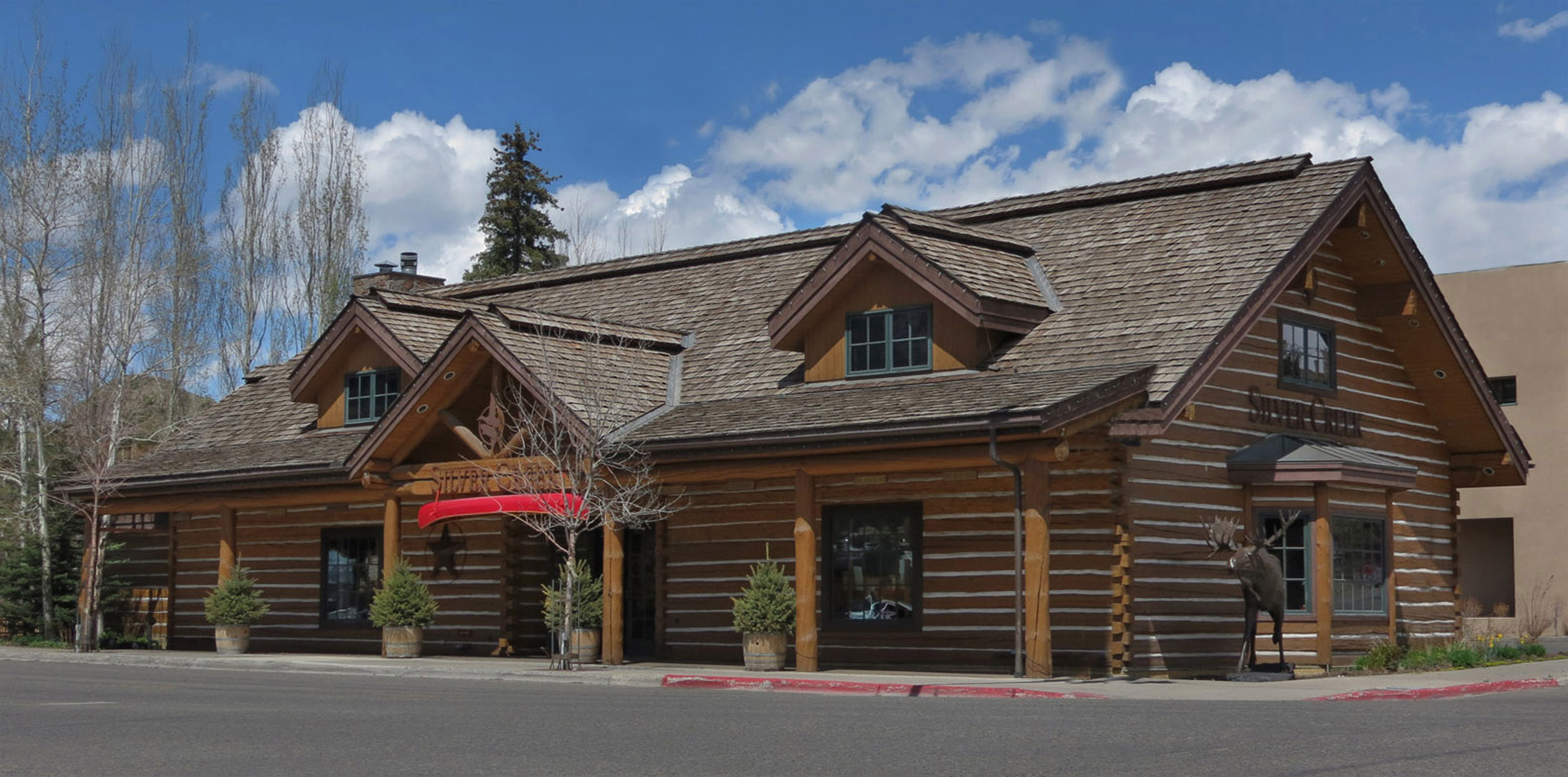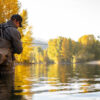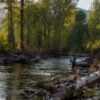The history of fly fishing and the emporiums that supported it dates back to the 1900s, when cities such as Boise, Twin Falls, and Pocatello were established by the movement of people into professions—doctors, lawyers, merchants—created a middle class with money to spare. The lure of the fish-abundant waters of Idaho enticed them.
“Fly shops” sprang up—in bars, hardware stores, and local grocery. But the favorite hangouts of Idaho’s primarily bachelor population were the “sports shops.” Sports shops offered three meals a day, served beer and booze, had pool and snooker tables, and allowed gambling when legal. These shops rented and sold rifles and shotguns, and, of course, sold handmade flies and bamboo rods to the burgeoning class of moneyed folk.
Of significance to sportsmen in the Wood River Valley was the Union Pacific Railroad’s opening of Sun Valley in 1936. Young men gravitated to the resort to work on the mountain in the winter and to give fly casting lessons by Sun Valley’s manmade lake, or guide guests on Silver Creek and the Big Wood in the summer—men like Clayton Stewart, Art Wood, Jack Redden, Ray Marks, and Taylor Williams, who closed his store in Gooding to run Sun Valley’s fishing and hunting operation. Williams (nicknamed “Bear Tracks” because he walked with his toes pointed out) became a close friend of Ernest Hemingway and accompanied him to Cuba every winter for saltwater fishing trips. Gear from Williams’ old store and other specialty fly operations around Idaho were stocked by Lane’s (eventually Pete Lane’s) in the Sun Valley Inn. But fly fishing took a big hit after World War II when veterans became enamored with spinning reels, whose origin is attributed to the French.
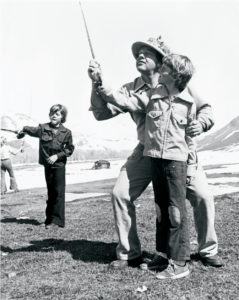
Two men—Ruel Stayner and Dick Alfs—were responsible for keeping fly fishing alive during the late forties when fly fishing had become an orphan to the industry. Ruel Stayner opened Stayner’s Sporting Goods in Twin Falls in 1946 and according to Don Anderson, the retired head of Sun Valley’s Sports Center, “Anyone who fished in southern Idaho hung out at Stayner’s.” Dick Alfs of Ketchum was a fixture, learning about resources and retailing with an eye to eventually open his own store.
That was going to take some hard-earned cash—so during his shift as headwaiter at the Ram Restaurant in the Sun Valley Inn, Dick would solicit orders for handmade flies from customers. He would tie all night and deliver them the next day. A corner of Alf’s living room was outfitted for tying, which is what he did whenever he had time away from work. Dick’s wife, Bobbie, jokes that the only way she recognized her husband was by the back of his head.
Despite the ascendancy of spin fishing after World War II, Dick took up fly fishing because he found it more challenging—an art form with character and history. A self-taught angler and fly tier, he mastered the art and shared it. While fishing Nevada’s Ruby Marshes in the mid-forties, he devised a bass fly and advertised it nationally in Outdoor Life, selling three for $1. He is attributed with tying the first legs on a hopper but is still most identified with a fly he created called the Hatch Master, later changed to the Hatch Matcher. He didn’t care what you called it as long as you bought it, and buy they did!
In 1962, advised by his doctors to slow down after a heart attack, Dick and Bobbie opened Dick Alfs Fly Shop, despite the advice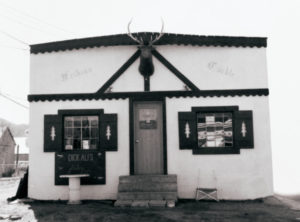 of Mike Mallo, manager of the Bank of Idaho, who exclaimed, “For God’s sake, don’t start a fly fishing shop… this is a ski resort!”
of Mike Mallo, manager of the Bank of Idaho, who exclaimed, “For God’s sake, don’t start a fly fishing shop… this is a ski resort!”
But Sun Valley Resort’s loss was fly fishing’s gain. Customers came from all over the country and from every walk of life: the Kennedys, John Glenn, Charleton Heston, Steve McQueen, and a lot of “loveable locals” such as Sun Valley Police Chief Dude Cain, Bill Brohan, Fred Hansing, Wally Wright, Bud Newcomb, Jack Hemingway, and, as Bobbie describes him, “tall, handsome and skinny” Travis Reed.
Dick Alfs Fly Shop carried whatever they could sell—fish eggs, worms, crab nets, camping gear—you name it! The store, originally single-story, was located where Chapter One Bookstore is today. It was so jam-packed that they hung a canoe from the ceiling and stuffed it with whatever items didn’t fit on the shelves. Sometime in the 70’s, a second story was added—soon to become equally jam-packed. Fear not: While Dick tied flies or escorted pals on trips to Nicaragua, Columbia, Costa Rica, Mongolia, Alaska, or the Yukon, Bobbie ran the shop. Not only could she put her finger on every piece of merchandise, she also taught herself to tie flies. Should stock run low on a customer’s favorite, Bobbie would take one apart ‘backward’ and reconstruct the number required to make the sale!
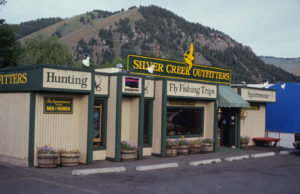 Space continued to be a problem, so Dick Alfs Fly Shop moved to Main and Fifth Street in Ketchum. In 1979, in a tough decision for the entire family, the shop was sold to two Ketchumites, Bill Bishop and Pat Bauman, who changed the name to Silver Creek Outfitters. Today, Terry Ring, who was a guide in the summer of 1979, is sole owner, CEO, and chief cook ‘n bottle washer!
Space continued to be a problem, so Dick Alfs Fly Shop moved to Main and Fifth Street in Ketchum. In 1979, in a tough decision for the entire family, the shop was sold to two Ketchumites, Bill Bishop and Pat Bauman, who changed the name to Silver Creek Outfitters. Today, Terry Ring, who was a guide in the summer of 1979, is sole owner, CEO, and chief cook ‘n bottle washer!
Whether people know it as Dick Alfs Fly Shop or Silver Creek Outfitters, the store has remained a reflection of the Sun Valley lifestyle. Physically things have changed. Like Dick Alfs Fly Shop years earlier, Silver Creek Outfitters eventually needed more space; so in 1992, property across Main Street was purchased and architect Janet Jarvis was hired to design today’s handsome log building.
With its new and enlarged space, merchandise has expanded to include more men’s and women’s sports and casual wear, shoes, hats, jewelry, accessories, gifts, luggage, sometimes even cookies, and stuffed animals. The fly fishing department is brimming with top-of-the-market gear for daily, overnight, and overseas excursions. A gang of guides is available to introduce anyone and everyone to the waters of Idaho and beyond—way beyond!
Does this make Silver Creek Outfitters different from Dick Alfs Fly Shop? In size, yes! In a variety of merchandise, maybe! In accommodating fly fishermen, no! As Bobbie Alfs recently told Terry, “He’d be proud of what you’ve done with it!”
By Ruth Lieder

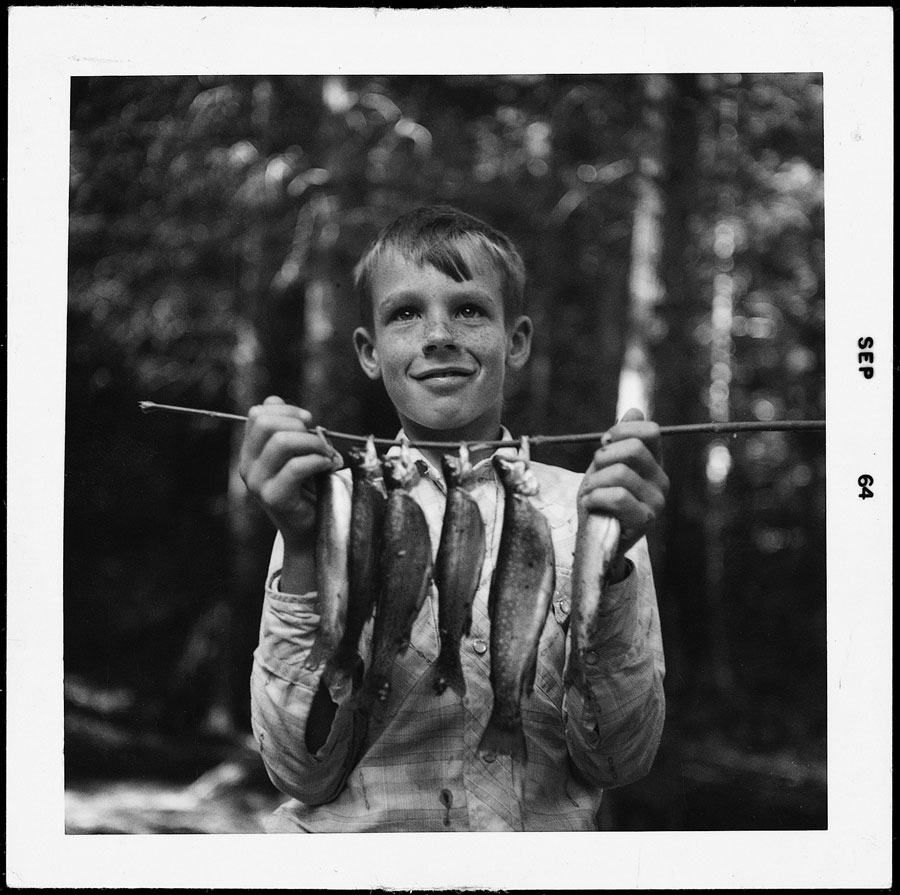
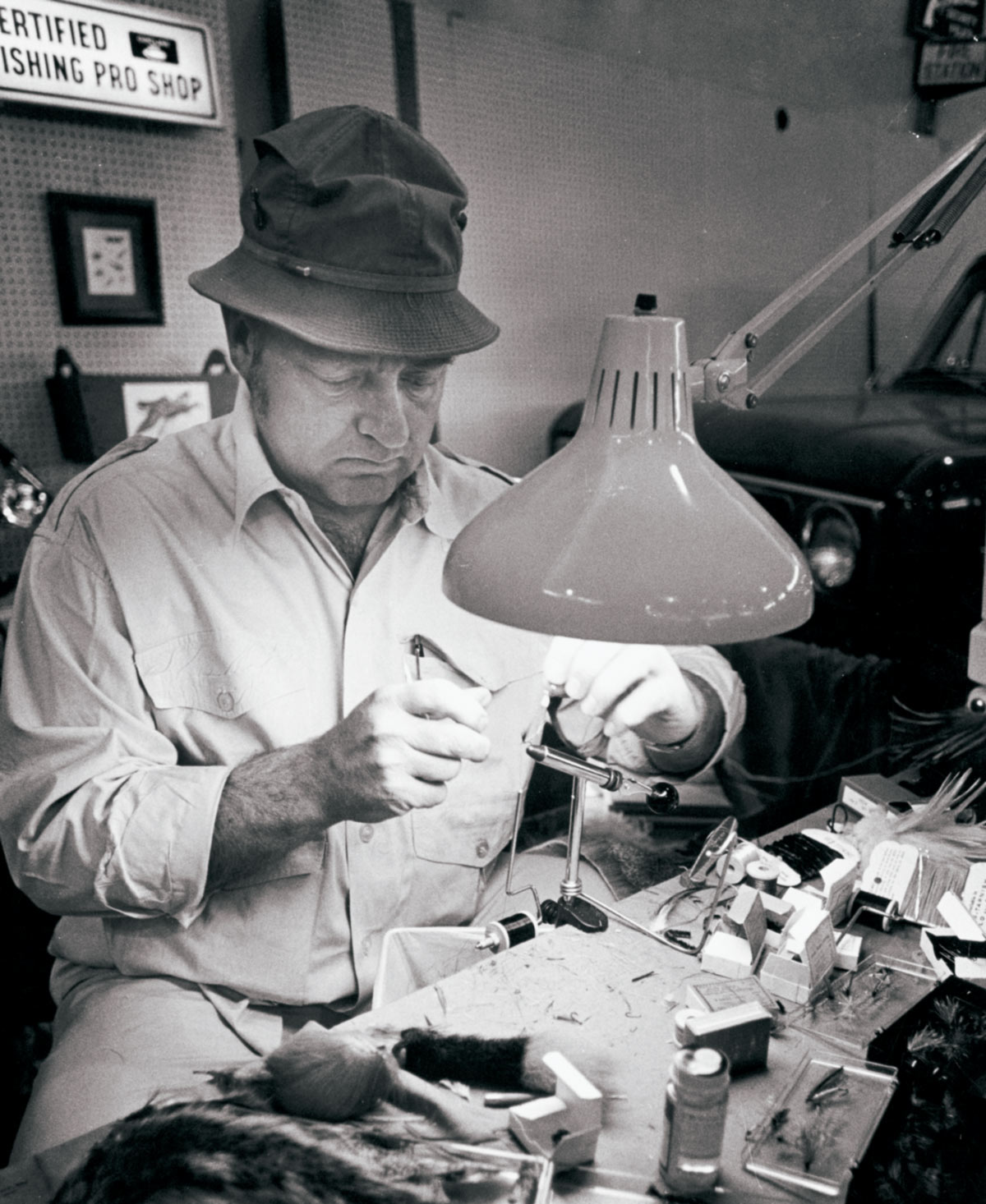
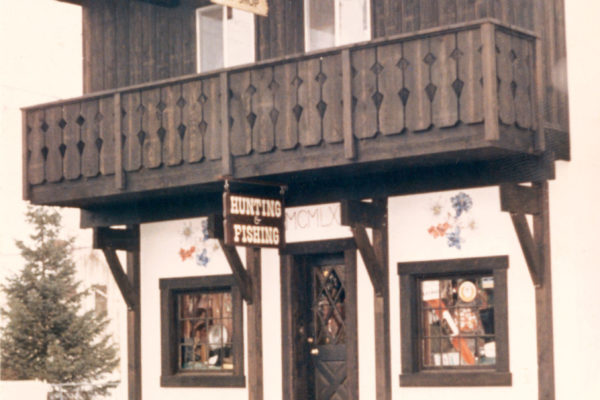
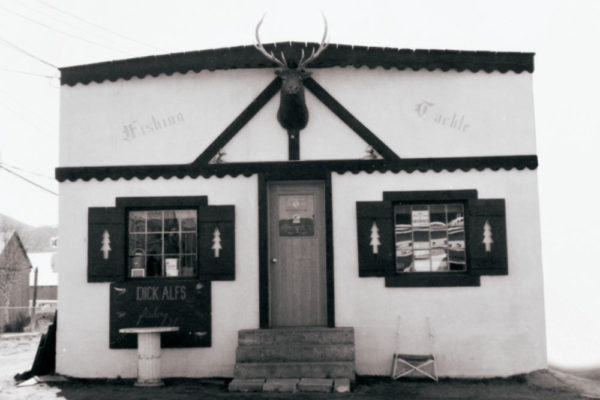
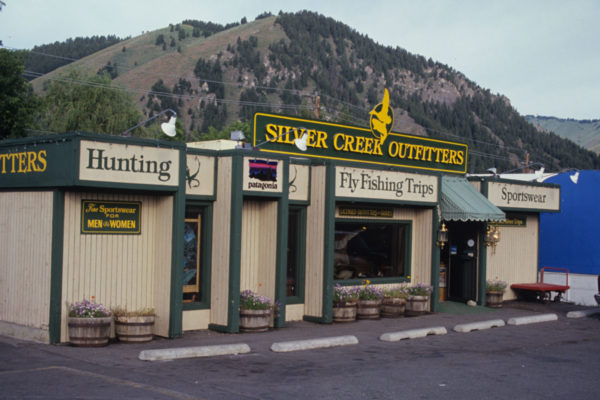
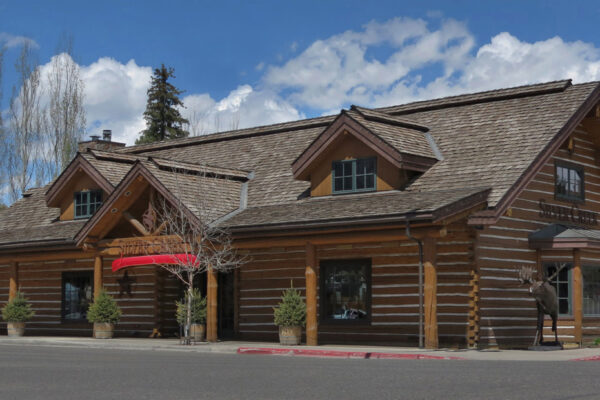

 of Mike Mallo, manager of the Bank of Idaho, who exclaimed, “For God’s sake, don’t start a fly fishing shop… this is a ski resort!”
of Mike Mallo, manager of the Bank of Idaho, who exclaimed, “For God’s sake, don’t start a fly fishing shop… this is a ski resort!” Space continued to be a problem, so Dick Alfs Fly Shop moved to Main and Fifth Street in Ketchum. In 1979, in a tough decision for the entire family, the shop was sold to two Ketchumites, Bill Bishop and Pat Bauman, who changed the name to Silver Creek Outfitters. Today, Terry Ring, who was a guide in the summer of 1979, is sole owner, CEO, and chief cook ‘n bottle washer!
Space continued to be a problem, so Dick Alfs Fly Shop moved to Main and Fifth Street in Ketchum. In 1979, in a tough decision for the entire family, the shop was sold to two Ketchumites, Bill Bishop and Pat Bauman, who changed the name to Silver Creek Outfitters. Today, Terry Ring, who was a guide in the summer of 1979, is sole owner, CEO, and chief cook ‘n bottle washer!